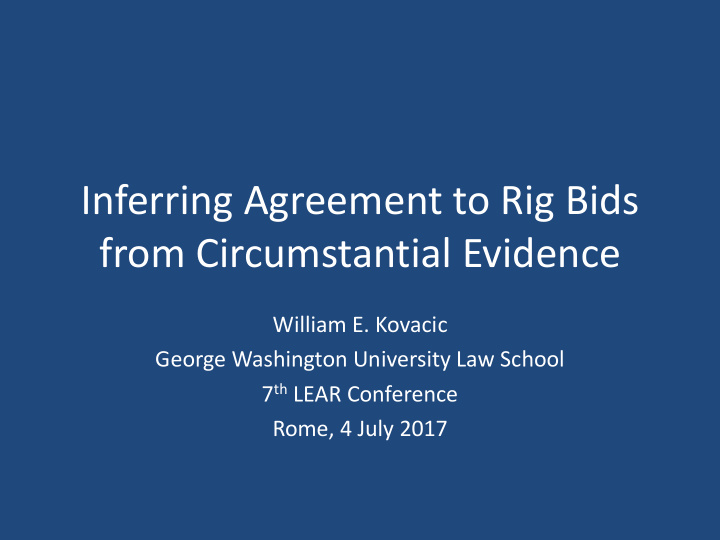



Inferring Agreement to Rig Bids from Circumstantial Evidence William E. Kovacic George Washington University Law School 7 th LEAR Conference Rome, 4 July 2017
Antitrust and Collusion in the US • Before 1890 • After 1890 – Stronger detection and sanctions – Stonger concealment • Issue for Antitrust – Basis for inferring agreement
Agenda • US Doctrine Status Quo • Circumstantial Proof • Personal Views Only
Joint Work • Bob Marshall • Leslie Marx • Alison Jones • Damon Anderson • Emma Cronenweth • Rob Anderson
Resources • Marshall & Marx, The Economics of Collusion (MIT Press 2012) • Kovacic, Marshall, Marx & White, Super Plus Factors and Agreement in Antitrust Law , 110 Michigan Law Review 393 (2011)
Marshall/Marx Methodology • Cartel Architecture and Operations • Examination of Past Cases – Agency decisions – Published case studies – Own consulting
US Doctrine Fundamentals • Sufficient Proof of Agreement – Direct – Circumstantial • Parallel Conduct Alone: Insufficient • Parallel Conduct Plus other Proof – “Plus Factors”
Plus Factors • Industry Structure • Firm Conduct – Past collusion – Communications – Complexity – Irrationality
Traditional Application • Checklist • Tick the Box • Are There Enough?
Emerging Approach • Link Factors to Cartel Tasks • Form Consensus • Detect Deviations • Punish Cheaters • Suppress External Threats – Buyers, suppliers, mavericks
Super Plus Factors • Close Connection to Cartel Behavior • Linked to Cartel Performance Tasks
Super Plus Factors and Bid Rigging • Extensive Communications • Extensive Subcontracting • Broad Pattern of Refusals to Deal • Sales Force Incentives
Recommend
More recommend